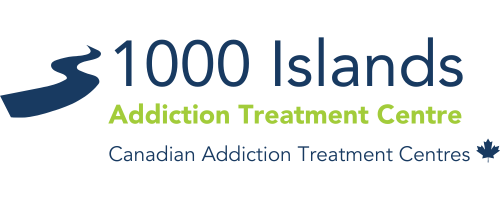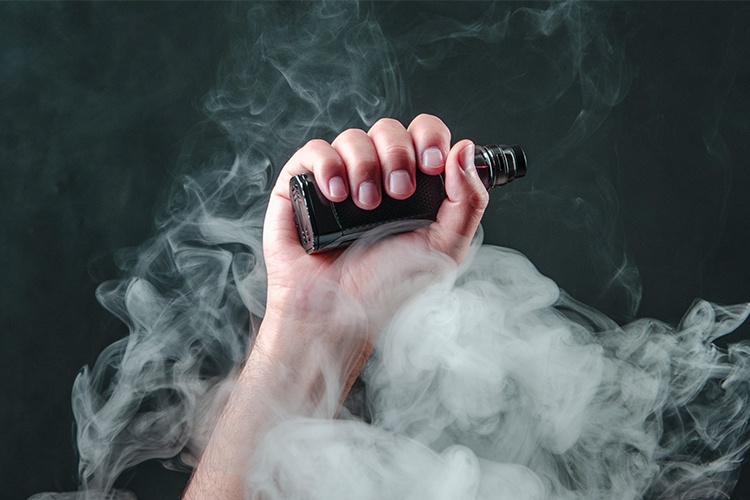Inhalants Rehab in Ontario
Are you or a loved one struggling with inhalant use and addiction? Sick of inhalant withdrawal symptoms and the detrimental impact on your mental health? You’ve come to the right place.
We’re an accredited inhalants addiction treatment centre for residents of Toronto, Ottawa, Montreal and surrounding areas.
Our onsite inhalants detox program will set you up for success in recovery from substance use disorder.
How Can We Help You?
Inhalants Addiction Treatment Centre
When we think of addiction, we tend to think of substances like alcohol, heroin, opioids and cocaine. But substances of abuse a lot closer than the liquor store or the neighbourhood drug dealer. All you have to do is look in your kitchen cupboards or in your garage.
Regular household products such as glue, hand sanitizer, aerosol cleaning products and paint can produce a euphoric high when ingested, usually through inhalation. This is extremely dangerous: these products are not intended for human consumption in any form, and they are considered toxic. In some cases, even a single use can result in brain damage, cardiac arrest, seizures and a number of other symptoms. There is a very high risk of death, especially when these products are used with other substances.
One of the biggest challenges with overcoming an addiction like this is that the products are easily available and inexpensive, and they can be purchased by anyone of any age. That makes them appealing to children and youth who are looking for something to experiment with.
CALL OUR TOLL-FREE HELPLINE NOW AT 1-855-929-4045 or SEND US A MESSAGE
What Kinds Of Inhalants Are There?
Inhalants come in many forms, all of which can be purchased from a grocery store or a hardware store for just a few dollars. The two main types of inhalants are solvents and nitrites.


Solvents
Solvents are substances that have the ability to dissolve other substances. Examples include nail polish remover, kerosene, paint thinners and model glue. Some users will hold the product to the nose and inhale, while others will use a nebulizer, which is a machine designed to convert medications into a fine mist that can be breathed in.
The effects vary from product to product. Sometimes the symptoms mimic those of alcohol intoxication: slurred speech, loss of coordination, blurred vision and emotional volatility. Some people experience hallucinations, nausea and vomiting, and headaches. Long-term use of solvents can result in skin irritation and blisters around the nose, as well as damage to various organs including the heart and lungs.
Nitrites
Nitrites are in many powerful cleaning and deodorizing products because of their antibacterial properties. Examples of nitrites include electronics cleaners, room deodorizers and various products used in the automotive industry.
These substances can create a sensation of floating, and of the mind being separate from the body. Each use can result in low blood pressure, dizziness and blurred vision, and cardiac arrest, which can be fatal. Long-term effects include impaired memory, depression, reproductive issues and a compromised immune system.

Inhalant Withdrawal Symptoms
Irritability
Someone experiencing inhalant withdrawal symptoms is often in a “bad mood” and is quick to anger. Not only is this caused by stress and having no to access inhalants, your body also goes through chemical changes impacting your mood when coming down from inhalant use.
Insomnia
It can be difficult to sleep when coming off of regular inhalant use. This is because your body is slowly adjusting to a change in chemical balance without the mood altering substance.
Cravings
It is difficult to think about other things when you’re coming off of regular inhalant use. Part of inhalant withdrawal symptoms is that will experience physical and emotional urges to find and use the drug which are very difficult to control or ignore, contributing to strained mental health.
Headaches
Common inhalant withdrawal symptoms include headaches. This is because of the change in balance in your brain’s chemistry when ceasing inhalant use.
Nausea
Physical inhalant withdrawal symptoms can manifest into the feeling of needing to vomit, which is caused by the chemical change in your nervous system when you halt substance use.


How Can I Get Help?
Inhalants addiction is extremely dangerous, and it is prevalent among youth whose brains are still in the process of developing. The sooner the addict gets help, the better. We offer a full range of inpatient addiction treatment services. We start by providing a safe, medically supervised environment in which the addicted person can undergo withdrawal. This is followed by an inhalants addiction treatment program that is customized to the individual, to address their unique needs and help them heal using methods that are most likely to work for them.
Our facility is located in the Thousand Islands region of Ontario. It is in a beautiful setting surrounded by nature. This, along with the safe, caring environment provided by our staff, lends itself to healing and renewal.
To get started, give us a call. We look forward to being a part of your recovery journey.
How Are Inhalants Ingested?
Sniffing
Some products can be inhaled as they are, without having to use any other items such as a cloth or a bag. They can simply be held up to the nose while the user sniffs them. Examples include permanent markers and nail polish remover.
Sniffing carries the risk of Sudden Sniffing Death Syndrome, which occurs when the brain attempts to react to a sudden deprivation of oxygen. This response can elevate the heart rate, resulting in fatal cardiac arrest.
Huffing
Aerosol products like whipped cream dispensers and aerosol cleaning fluids are either sprayed directly into the nostrils, or they are sprayed into a rag that is held up to the nose or put into the mouth.
Huffing results in loss of coordination and impaired judgment, but it also creates a hallucinogenic state that is highly addictive. These effects only last for a few minutes, which leads to frequent use and a high risk of serious medical complications and death.
Bagging
This method can be used with almost any aerosol inhalant. The product is sprayed into a plastic bag such as the ones you get from the grocery store. The bag is then held to the mouth or placed over the head.
This is the most dangerous method of ingestion: not only does use of the inhalant itself carry a high risk of brain damage and heart failure, the bag can lead to suffocation, especially if the user lacks the coordination to remove the bag.

Frequently Asked Questions
What is inhalant addiction and how is it treated in Ontario?
Inhalant addiction is the regular use of an inhalant substance that is causing a negative impact in your life. It can also be defined by an inability to cease use despite effort and the desire to quit.
Inhalant addiction can be treated with intensive therapy and counselling through an accredited treatment provider, addressing the mental health aspect of addiction.
How long does an inhalant rehab program typically last in Ontario?
Just like with opioid addiction, inhalant addiction can be extremely difficult to overcome safely and effectively as it creates an emotional and physical dependence. It also often accompanied with co-occurring mental health issues or mental disorders, making the treatment more complex.
Our inpatient facility offers at least 42-day program, and can often be extended for those who need more time.
How is detoxification from inhalants managed in Ontario rehab centres?
In order to overcome inhalant withdrawal symptoms safely, many rehab facilities such as 1000 Islands offer an onsite withdrawal management program.
Inhalants detox ensures the client is safe, clear headed, and will no longer experience withdrawal symptoms when they begin their recovery treatment program.
It is strongly advised to pursue addiction treatment post-detox, as relapsing after your tolerance has lessened can increase the risk of inhalant overdose.

